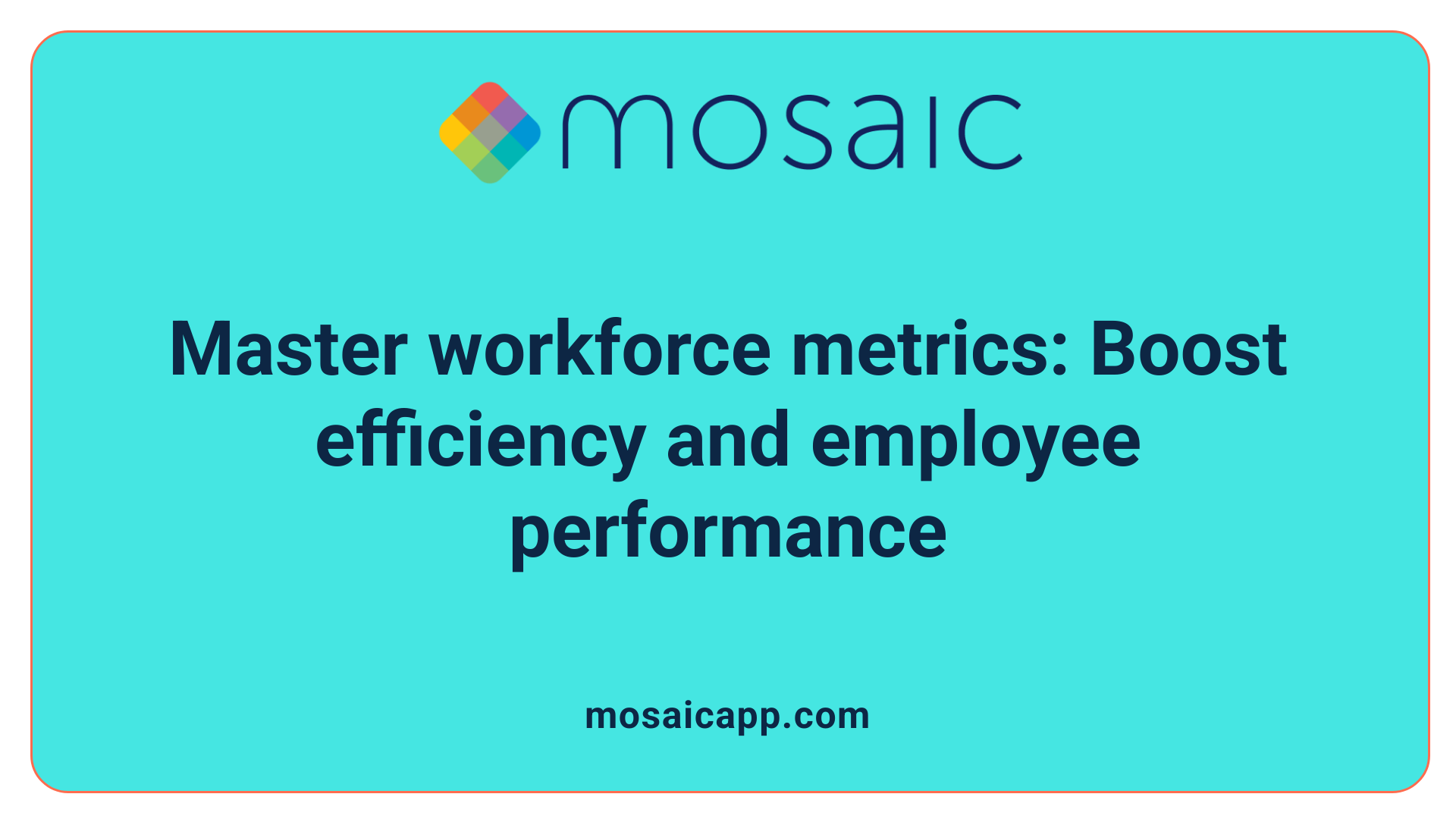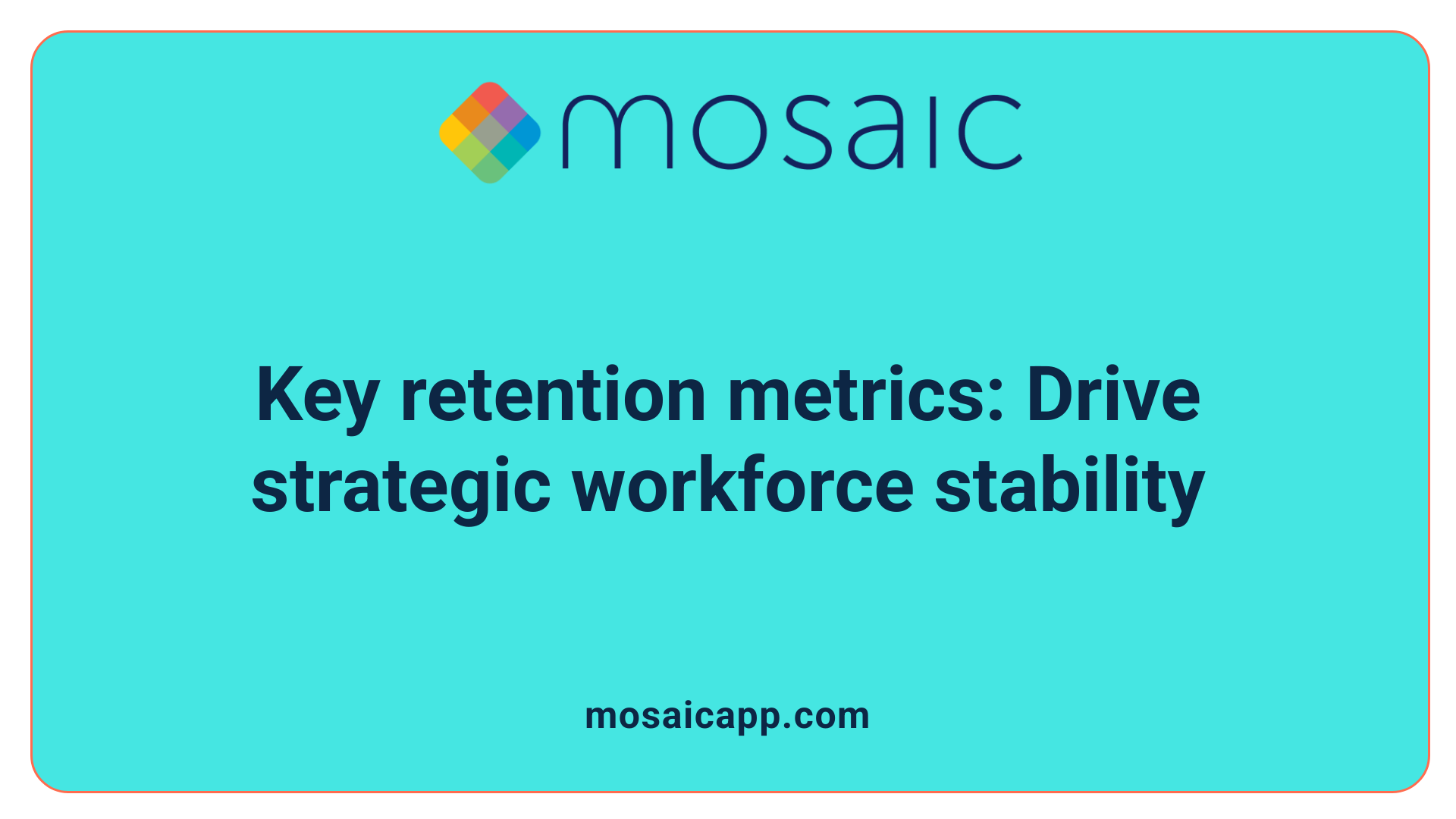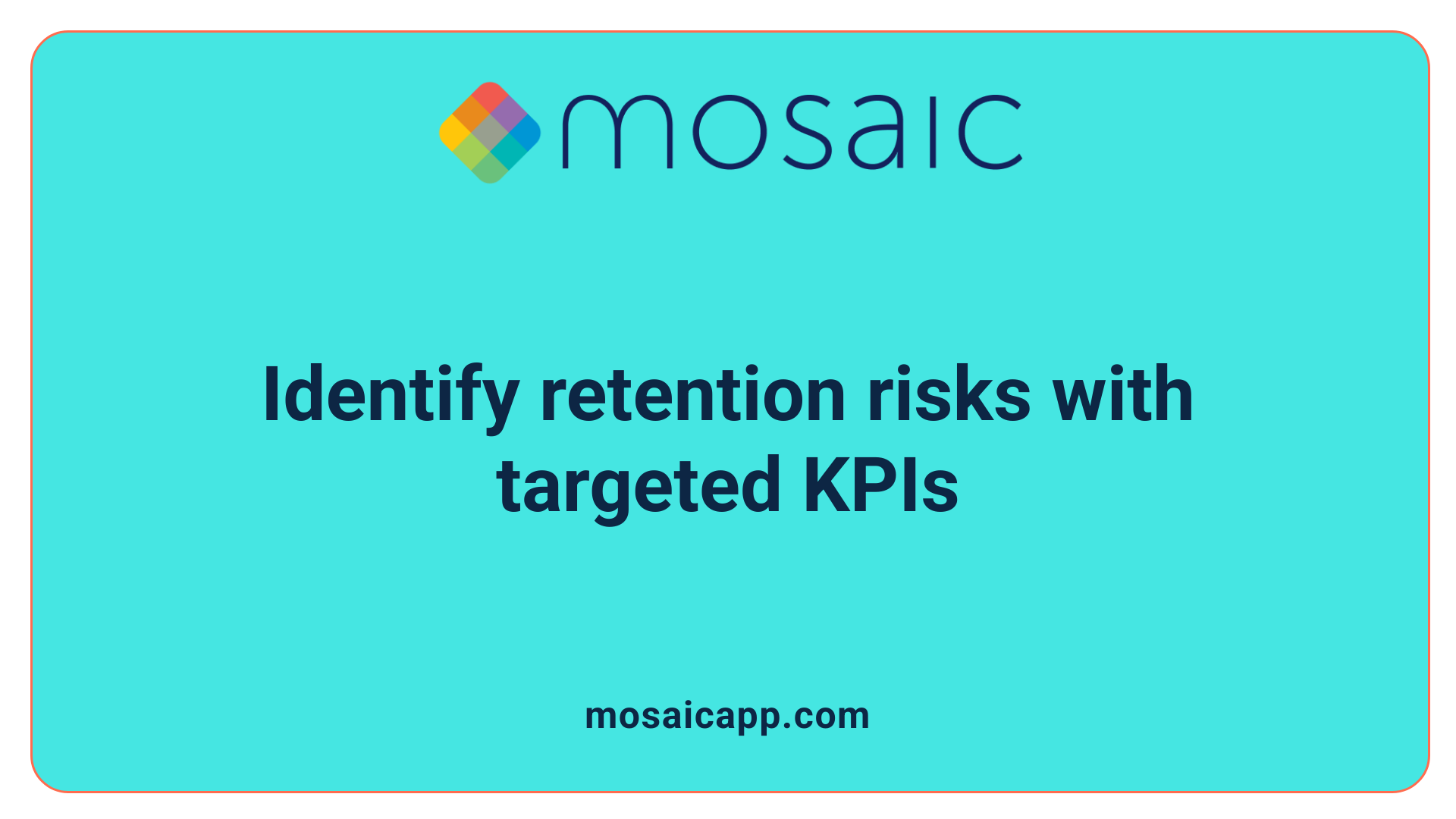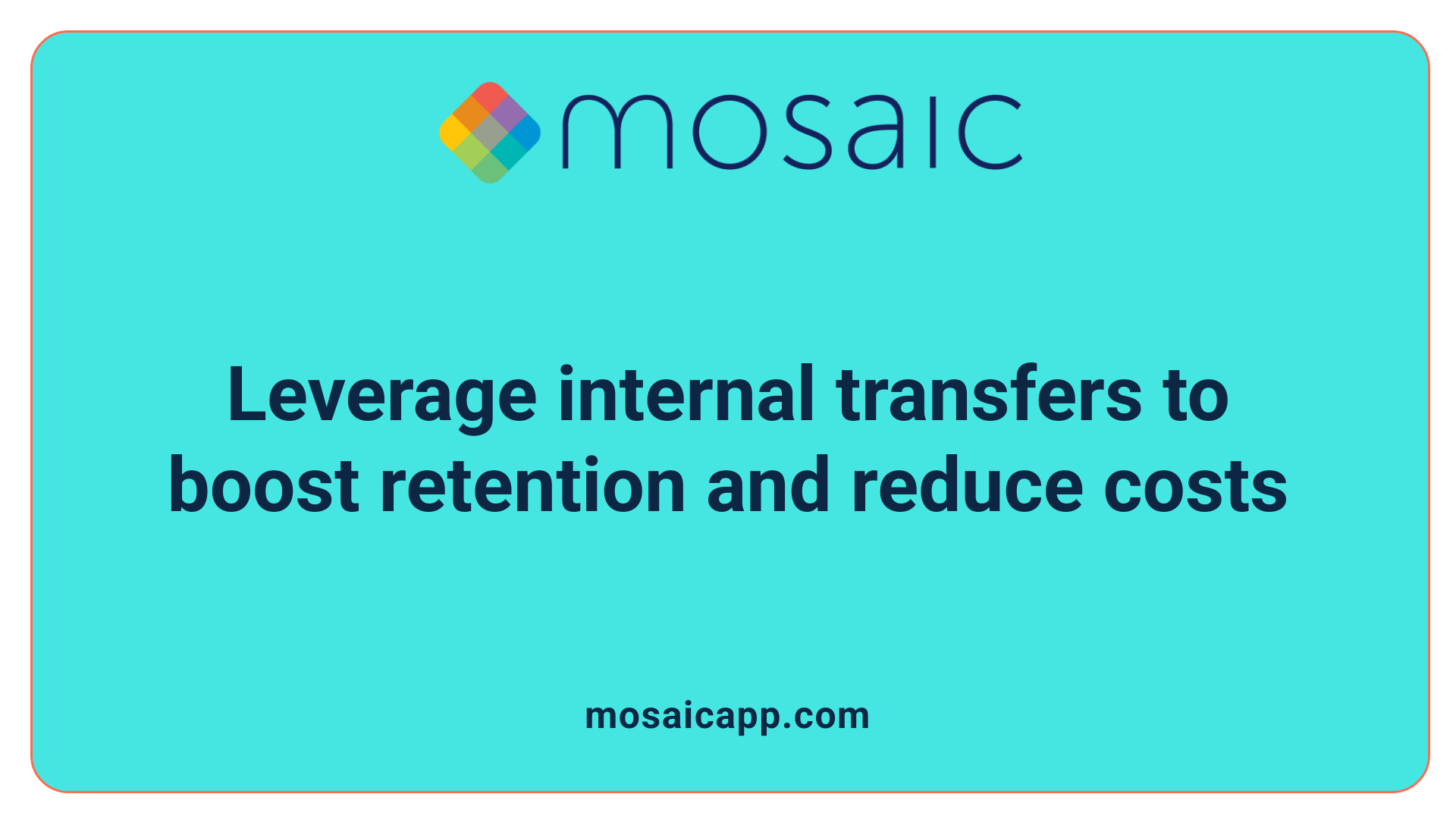Understanding the Critical Role of Metrics in Workforce Management
In today’s dynamic business environment, effective workforce management is pivotal for organizational success. By harnessing detailed metrics on employee retention and mobility, companies can refine operations, reduce costly turnover, and foster an engaged, productive workforce. This article delves into key statistics and strategic insights to guide leaders in optimizing talent management and workforce planning.
The Foundation of Workforce Management Metrics

What are workforce management metrics and why are they important?
Workforce management metrics are data points organizations use to measure, analyze, and optimize their business operations. These metrics focus specifically on employee performance, engagement, and productivity. By tracking such data, organizations can identify strengths and weaknesses in workforce dynamics and take targeted actions to improve outcomes.
Key metrics overview
Some essential workforce management metrics include:
- Customer satisfaction
- Headcount and attendance rate
- Turnover and attrition rates
- Time to hire and cost per hire
- Employee retention and productivity
- Schedule adherence and utilization rate
- Overtime and idle time
- Revenue per employee and salary distribution
Each metric provides insights into different facets of workforce health, such as staffing levels, employee engagement, costs, and operational efficiency.
Impact on organizational efficiency and decision-making
Tracking these metrics enables organizations to improve operational efficiency by making data-driven decisions. For example, knowing turnover rates helps identify retention challenges, while monitoring productivity reveals where performance enhancements are needed. Workforce management metrics also support talent development by highlighting skill gaps and performance trends, fostering better employee engagement. Overall, these insights help align workforce planning with business strategy, reduce costs, and boost organizational agility.
Essential Employee Retention Metrics and Their Significance

How is employee turnover measured and what types exist?
Employee turnover represents the percentage of employees departing an organization within a specific timeframe. It can be broadly categorized into voluntary turnover, where employees resign by choice, and involuntary turnover, which includes terminations initiated by the employer. To quantify this, organizations apply formulas that compute overall turnover rates as well as separate voluntary and involuntary rates, enabling them to identify the nature and causes of attrition.
Understanding turnover rate calculations
Calculating turnover rates involves dividing the number of separations during a period by the average number of employees, then multiplying by 100 to get a percentage. For instance, voluntary turnover rate focuses on employees who leave by their own decision, helping highlight issues like job dissatisfaction or poor career progression. In contrast, involuntary turnover rate captures involuntary separations, often signaling workforce planning challenges or performance management outcomes.
Measuring retention rate and its importance
Retention rate measures the proportion of employees who remain with the company over a defined period. High retention rates typically indicate employee satisfaction, effective leadership, and a positive work environment. Tracking retention by tenure, department, or performance segments identifies areas with potential risks or opportunities for improvement.
Distinctions between voluntary and involuntary turnover
Differentiating voluntary from involuntary turnover provides actionable insights. Voluntary departures often stem from factors such as lack of growth, inadequate compensation, or work-life balance issues, while involuntary turnover may arise from mismatched roles or restructuring. Tailoring retention strategies accordingly can reduce unnecessary losses and associated costs.
Impact of turnover on organizational health
High turnover rates negatively affect morale, productivity, workplace culture, and an organization's external reputation. Costly consequences include recruitment expenses, onboarding, lost productivity, and the depletion of institutional knowledge. Recognizing and managing turnover through continuous monitoring of metrics helps organizations maintain a stable, engaged, and high-performing workforce.
Cost Implications of Employee Turnover
What are the financial costs associated with employee turnover?
Employee turnover carries significant financial costs that vary depending on the seniority of the employee. For entry-level roles, turnover expenses can reach approximately 50% of the employee's annual salary, while for senior-level positions, costs can escalate to as much as 200% of their yearly pay.
Recruitment and onboarding expenses
These costs encompass recruitment advertising, agency fees, interview processes, background checks, and comprehensive training programs. Each step is resource-intensive and contributes to the overall expense linked to replacing departing staff.
Lost productivity costs
Beyond direct recruitment costs, lost productivity is a crucial and often overlooked expense. When employees leave, organizations face a temporary drop in performance as new hires ramp up, causing delays and affecting overall operational efficiency.
Importance of minimizing turnover costs
Given these substantial expenses, minimizing turnover is critical. Organizations that effectively track turnover rates and retention metrics can identify problem areas, tailor strategies, and reduce costly departures. Proactive workforce management and employee engagement initiatives serve as essential tools in controlling turnover costs, ultimately supporting financial stability and organizational success.
Identifying and Addressing Retention Challenges Through Key KPIs

What KPIs help organizations identify retention challenges?
Tracking employee retention and satisfaction is essential for understanding workforce stability. Organizations monitor overall retention rates and employee satisfaction scores to gauge how well they retain talent and keep workers engaged.
Retention by department, tenure, and geography
Retention rates vary across departments, tenure brackets, and geographic locations. Analyzing attrition by these segments helps companies pinpoint specific problem areas—for instance, high turnover in a particular department or low retention among employees in their first year. This detailed data enables targeted retention efforts.
High-performer and regrettable attrition
Losing top talent, measured by the high-performer turnover rate, significantly impacts productivity and morale. Regrettable attrition, which involves the departure of key leaders or niche skill holders, poses strategic risks. Monitoring these KPIs allows businesses to prioritize retention of their most valuable personnel.
Exit interview insights
Exit interviews and feedback surveys provide qualitative insights into why employees leave. Identifying common exit reasons uncovers systemic issues and guides preventative actions. These conversations reveal workplace culture and leadership challenges that raw metrics alone cannot show.
By combining quantitative KPIs with qualitative exit data, organizations can develop robust retention strategies that address the root causes of turnover. This approach supports workforce stability, enhances organizational performance, and reduces costly employee departures.
The Role of Employee Engagement and Satisfaction in Retention
How does employee engagement influence retention?
Employee engagement plays a crucial role in retention by fostering a motivated and committed workforce. When employees feel satisfied and connected with their roles and the organization, they are more likely to stay, reducing turnover rates and the associated high costs.
Connection between engagement and turnover
A strong relationship exists between employee engagement and turnover. Disengaged employees often seek opportunities elsewhere, leading to higher attrition. Conversely, engaged employees show better loyalty, directly impacting retention metrics.
Measuring employee happiness and new hire satisfaction
Organizations track metrics like employee happiness and new hire satisfaction to understand workforce sentiment. These indicators reveal how well employees feel supported and valued, highlighting areas needing improvement before dissatisfaction causes departures.
Impact on productivity and morale
Engaged employees contribute to higher productivity and positive workplace morale. This synergy enhances overall organizational performance and supports a healthy culture that encourages retention.
By focusing on engagement and satisfaction, companies can reduce turnover, improve employee productivity, and maintain a stable, motivated workforce.
Employee Mobility: Internal Transfers as a Strategic Retention Tool

What is internal mobility and why is it important?
Internal mobility refers to the movement of employees between different roles or departments within the same organization. It plays a pivotal role in workforce management by providing employees with new career development opportunities without the need to leave the company.
Supporting internal mobility benefits organizations by enhancing employee engagement and satisfaction. When employees see clear pathways for growth, they are more motivated and committed, which reduces voluntary turnover rates.
By facilitating internal transfers, companies can effectively reduce hiring costs. This approach minimizes expenses related to external recruitment such as advertising, interviewing, and onboarding, while also shortening the time to fill positions.
Moreover, internal mobility helps retain valuable talent by aligning employee skills and aspirations with organizational goals. This strategic alignment fosters a resilient and agile workforce, well-prepared to meet evolving business challenges.
Benefits of supporting career development through internal mobility:
- Increased employee retention and satisfaction
- Reduced dependency on external recruitment
- Enhanced skill development and knowledge sharing
- Strengthened organizational culture and employee loyalty
Impact on hiring costs and talent retention:
Organizations that invest in internal mobility experience lower overall hiring costs and improved workforce stability. This strategy ensures critical roles are filled quickly and by employees already embedded in the company culture, improving performance and minimizing the disruptions caused by external hires.
By valuing and promoting internal moves, companies turn workforce planning into a proactive process that supports long-term business success and employee career fulfillment.
Utilizing Technology for Real-Time Workforce Analytics
How do HR software tools support workforce retention and management?
HR software tools such as NetSuite’s SuitePeople and Deel’s HRIS play a crucial role in modern workforce management by enabling organizations to track and analyze employee metrics in real time. These platforms centralize reliable HR data, including turnover rates, retention statistics, and employee satisfaction scores, which are essential for making informed decisions.
By providing comprehensive dashboards and analytics, these tools help identify patterns and trends in workforce stability. This real-time insight allows HR teams to act proactively, addressing issues before they escalate and tailoring retention strategies to specific employee segments or departments.
Moreover, such software supports strategic workforce planning by forecasting future talent needs, managing recruitment costs, and monitoring critical indicators like employee productivity and engagement. The ability to quickly access and interpret this data ensures businesses remain agile and aligned with their overall goals.
In summary, HR software platforms empower organizations to move from reactive to proactive management of the workforce, effectively reducing turnover costs and enhancing employee satisfaction. This technological integration is key to sustaining a motivated, productive, and stable workforce in today’s dynamic business environment.
Navigating Workforce Planning Amid Automation and AI Trends

How are automation and AI affecting workforce planning?
Automation is significantly reshaping the workforce landscape. Currently, about 15.1% of U.S. jobs—approximately 23.2 million roles—have over 50% of their tasks automated. This trend is set to grow as 90% of Chief Human Resource Officers (CHROs) anticipate a rapid acceleration in AI integration by 2025.
Current automation prevalence in tasks
This level of automation means that many routine and repetitive tasks are already handled by machines, leading to shifts in job roles rather than outright eliminations. Instead of disappearing, most jobs are evolving, requiring employees to acquire new skills and adapt to new responsibilities.
CHRO expectations for AI integration
The expected surge in AI incorporation highlights the growing importance of strategic workforce planning. HR leaders must anticipate these changes and proactively manage the transition to ensure employees are equipped to work effectively alongside AI systems.
Implications for workforce reskilling and role redesign
To navigate these shifts, organizations need to prioritize reskilling programs and redesign roles to complement AI capabilities. This approach promotes strategic human-AI collaboration, safeguarding productivity while embracing innovative technologies.
By embracing thoughtful workforce planning centered on human talent development and AI integration, organizations can enhance agility, align talent with evolving business strategies, and mitigate risks associated with automation innovations.
Proactive Workforce Planning: Strategies to Mitigate Risks and Costs
Why is proactive workforce planning essential?
Proactive workforce planning enables organizations to reduce costs, build operational agility, and align talent acquisition and development with business strategy. It helps manage risks posed by technology adoption, especially automation, and demographic shifts, ensuring the workforce is prepared for future challenges.
Benefits of forecasting future workforce needs
Forecasting allows companies to anticipate changes such as rapid AI disruption, moderate adoption, or regulatory barriers. This foresight positions businesses to adjust staffing levels, skill requirements, and development programs accordingly. Organizations that excel in predicting workplace trends are more likely to outperform competitors, achieve operational excellence, and fuel sustainable growth.
Aligning talent with business strategy
Effective workforce planning ensures recruitment and retention efforts focus on skills and roles that directly support business goals. By identifying skills gaps and understanding employee tenure, productivity, and turnover, organizations can make informed decisions about hiring, reskilling, and role redesign. This alignment fosters a motivated, productive workforce that drives organizational success.
Managing risks due to automation and demographic changes
With 15.1% of U.S. jobs already heavily automated and 90% of CHROs expecting accelerated AI integration by 2025, managing transition risks is critical. Proactive workforce planning includes strategies such as reskilling employees, designing roles for human-AI collaboration, and balancing workforce demographics to maintain agility and resilience amid change.
Strategic planning, supported by real-time data and HR tools, empowers organizations to navigate disruption cost-effectively while optimizing talent performance and retention.
Segmentation of Retention Data for Targeted Workforce Strategies
How does segmenting retention data improve workforce management?
Segmenting retention data into categories such as tenure, department, geography, and performance allows organizations to gain sharp insights into workforce dynamics. By analyzing these distinct segments, businesses can identify which groups of employees are most at risk of leaving, enabling proactive interventions tailored to specific needs.
For example, retention rates by tenure highlight whether early-career employees or long-serving staff are more likely to depart. This information guides focused initiatives like enhanced onboarding or career development programs. Department-based segmentation reveals which teams might be facing higher turnover due to workplace culture or leadership issues, facilitating targeted coaching or resource allocation.
Geographical segmentation uncovers regional trends or localized challenges impacting retention, informing location-specific strategies. Performance-based analysis distinguishes how turnover affects different categories of employees, such as high performers whose loss is particularly detrimental.
This granular approach not only forecasts attrition risks more accurately but also supports effective leadership succession planning by identifying potential gaps that losing key talent could create. Moreover, it enhances internal mobility by revealing opportunities for redeployment or promotion within segments exhibiting higher turnover.
Such data-driven insights empower organizations to implement retention strategies that are precisely aligned with underlying causes and employee needs, thereby improving workforce stability, reducing costs associated with turnover, and sustaining organizational performance.
Understanding and Addressing Regrettable Attrition
What is regrettable attrition and why is it significant?
Regrettable attrition refers to the loss of key personnel within an organization, including leaders, influencers, or employees who possess specialized, niche skills. These departures are particularly impactful because they disrupt operational continuity, erode institutional knowledge, and weaken strategic capabilities. When such employees leave, organizations face a significant setback in maintaining their competitive edge and executing long-term initiatives effectively.
Identifying loss of key personnel
Regrettable attrition is differentiated from general turnover by focusing on the departure of individuals whose absence critically affects team performance and organizational success. This can include executives who drive strategy, highly skilled technical staff essential for specific projects, or top performers who contribute disproportionately to productivity. Recognizing these losses is essential for understanding where the greatest vulnerabilities lie.
Strategies to reduce regrettable employee departures
To combat regrettable attrition, organizations should develop targeted retention strategies that emphasize:
- Succession planning: Preparing for potential departures by identifying and developing internal candidates for key roles.
- Stay interviews: Engaging with high-value employees regularly to address concerns proactively.
- Enhanced benefits and growth opportunities: Revisiting compensation packages and career development paths to increase employee satisfaction.
- Leveraging data: Using HR analytics to track retention metrics such as high-performer turnover rates and exit reasons, enabling early intervention.
Employing these approaches preserves critical talent, sustains productivity, and supports a robust organizational culture.
Retention Strategies to Support Workforce Stability and Growth
What effective strategies improve employee retention?
Organizations aiming to enhance employee retention must adopt multifaceted strategies that address both employee needs and organizational goals. One critical approach is revisiting benefits packages. By regularly reviewing and tailoring benefits to align with employee preferences and market standards, companies can boost job satisfaction and loyalty.
Another impactful method is conducting stay interviews. Unlike exit interviews, stay interviews focus on understanding employee motivations, concerns, and aspirations while they are still part of the organization. This proactive engagement allows leaders to address issues before they lead to turnover.
Succession planning is also vital for sustaining workforce stability. It involves identifying and developing internal talent to fill key roles, ensuring leadership continuity and providing clear career paths. This not only motivates employees but also reduces the costs and disruptions associated with unexpected departures.
Collectively, these strategies exemplify best practices in workforce management. They enable organizations to foster a motivated, productive, and goal-oriented workforce by enhancing engagement, reducing costly turnover, and aligning talent development with business objectives. Implementing such retention techniques leads to a more stable workforce, improved morale, and sustained organizational growth.
Balancing Human Judgment and AI in Workforce Decisions
Importance of human oversight in AI-driven decisions
Human judgment is essential alongside AI in workforce management because it ensures fairness, ethical considerations, and contextual awareness that AI alone may not fully capture. While AI can analyze large datasets and forecast trends, only human leaders can interpret nuances, understand employee sentiments, and make decisions that align with organizational values and culture.
Worker perspectives on human-AI collaboration
Surveys reveal that 80% of workers believe humans should review AI-driven decisions. Employees value the accountability and empathy that human oversight provides, which AI systems currently lack. This perspective reflects concerns about transparency and the need for balanced decision-making where technology supports but does not replace human insight.
Maintaining leadership role in workforce planning
Despite rapid AI adoption expected to accelerate by 2025, human leadership remains crucial in workforce planning. Leaders combine AI-generated data with experience and critical thinking to optimize talent alignment, develop retention strategies, and manage risks effectively. This collaborative approach fosters trust, enhances employee engagement, and maximizes organizational performance.
Integrating AI tools with strong human leadership therefore creates a more resilient, agile workforce strategy that respects both data-driven insights and human values.
Utilizing Workforce Metrics to Optimize Cost Efficiency and Performance
How do workforce metrics guide cost efficiency and performance?
Workforce metrics such as headcount, cost per hire, and revenue per employee offer organizations valuable insights into their staffing and financial efficiency. Tracking headcount helps businesses understand their current workforce size and capacity, enabling them to make informed decisions about hiring and resource allocation.
Cost per hire encompasses all recruitment expenses including advertising, agency fees, interviews, background checks, and onboarding, which assists companies in budgeting effectively and identifying areas to reduce hiring costs. Meanwhile, revenue per employee measures the financial contribution of each employee and is essential for assessing productivity and profitability.
Skills gap analysis
Conducting a skills gap analysis identifies the differences between the current skill sets of employees and those required to meet strategic business goals. This analysis directs targeted training and recruitment efforts, ensuring the workforce develops the capabilities needed to enhance performance and respond to evolving market demands.
Employee productivity and engagement measurement
Measuring employee productivity involves evaluating how efficiently employees complete tasks within set timeframes, directly affecting operational efficiency. Equally important is tracking employee engagement, which reflects motivation and commitment levels. High engagement correlates strongly with increased productivity and reduced turnover, making it a crucial area for performance optimization.
By monitoring these workforce metrics, organizations gain actionable data to optimize talent management, reduce unnecessary costs, and improve overall business outcomes. This leads to a more agile and effective organization capable of sustaining growth in a competitive environment.
Harnessing Data-Driven Insights for Future Workforce Success
Employee retention and mobility statistics are indispensable tools in navigating the complexities of modern workforce management. By systematically measuring key metrics, leveraging technology, and fostering human-AI collaboration, organizations can design targeted strategies that reduce turnover costs, enhance employee engagement, and drive sustainable growth. Effective workforce planning, grounded in robust data analysis, empowers leaders to build agile, resilient teams poised to thrive amid evolving business landscapes.

